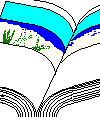Signature
Pagination
|
As in saddle stitching, the total number of pages must be divisible by four, but there is also a possibility that more or less pages could be more economical depending on how the job gets printed. For example, a
6" X 9" book will be printed in 32- page signatures. You have a project that is 338 pages. The smallest signature that can be printed is four pages. That gives us:
- ten 32-page signatures, printed on full sheets (pages 1-320)
- one 16-page signature, printed on a full sheet as a work and turn (two impressions per sheet; pages 321-336)
- one 4-page signature printed on a 9" X 12" sheet on a smaller press (pages 337-340)
This last section could be eliminated or utilized more efficiently. First of all, it has two blank pages, basically wasted space. Second of all, it is printed on another press and the signature is thinner and of a different character than all the other signatures. Although a short sig can be inserted and printed without any real problem, it would be more economical to either edit the book to delete two pages or add two pages to fill out the two blanks.

|
Keep Folios
|
The folio is the page number. Page one of a book usually is NOT the first printed page. In most books and perfect bound publications, there are three basic sections:
- Front Matter (FM): Title page, editors page, copyright page, table of contents, dedications, etc. The introduction is often part of the FM. Basically any copy before page one is FM.
- Text or Guts: This is the actual book or subject that starts with page one. Regardless of where page numbers lie on the page throughout the book, the standard positioning for page numbers on each chapter opener is the bottom of the page to prevent distraction from the chapter opening head.
- Back Matter (BM): This is the appendix, bibliographies, index, or any other supplementary data. Usually the BM maintains page numbering of the text but is often numbered on its own (A-1 for appendix, etc.)
|
Cover
|
The cover layout of a perfect bound publication consists of three parts: The front and back covers and the spine. The width of the spine will vary depending on not only the number of pages of the publication but also
the paper used. When setting up a spine for any perfect bound publication, call us and specify the paper and number of pages and we can give you a thickness to design the spine to.

|
Crossovers

|
Because perfect bound publications are glued at the fold, a little of the "gutter" gets lost in binding. Crossovers of any critical nature are therefore not recommended, however they can be implemented. Lay them out as with saddle stitched designs in reader's spreads and notify us that there will be perfect bound crossovers. We will have to give special consideration to crossover pages in prepress, stripping, and bindery to make sure they print correctly.
|